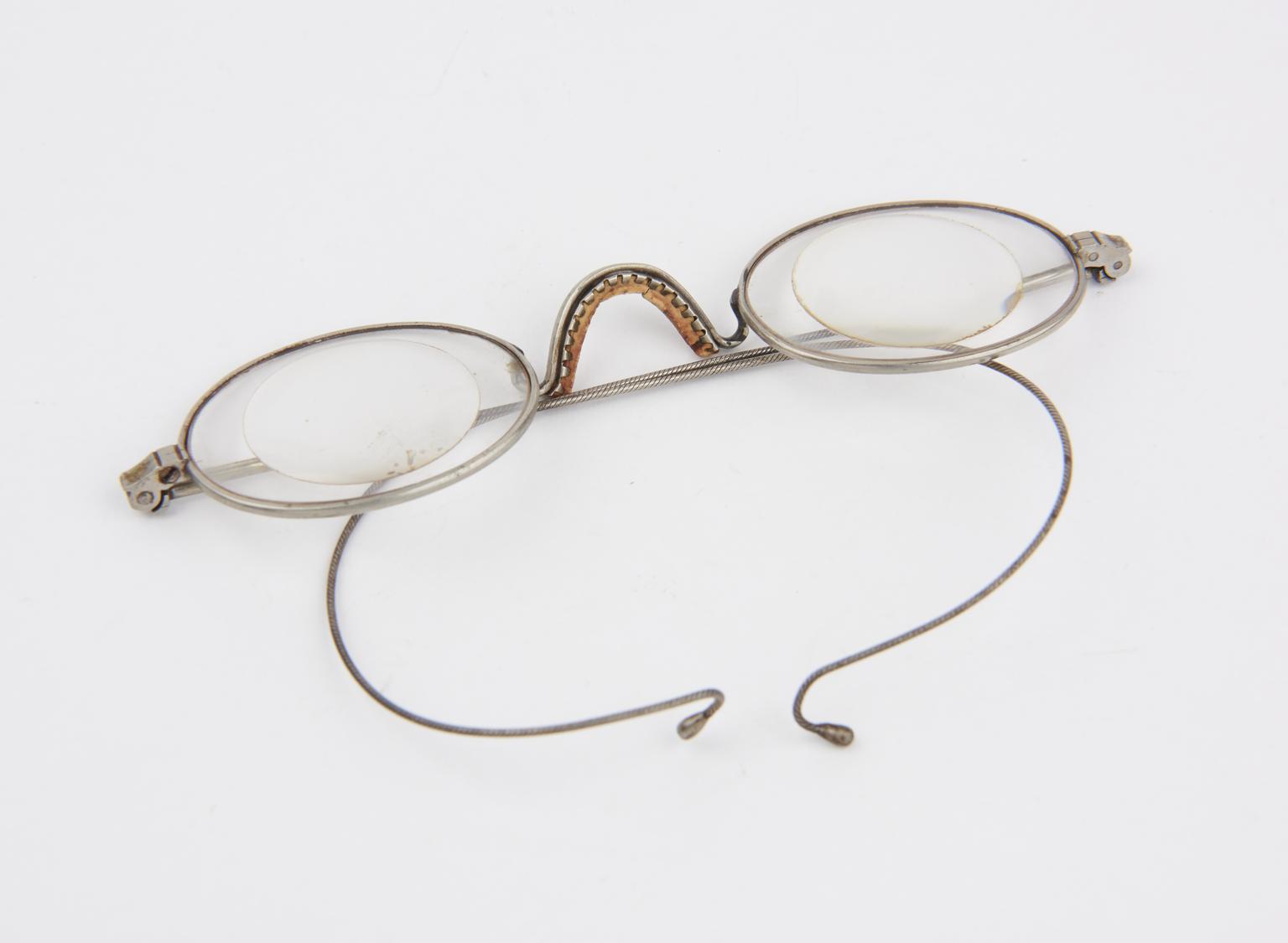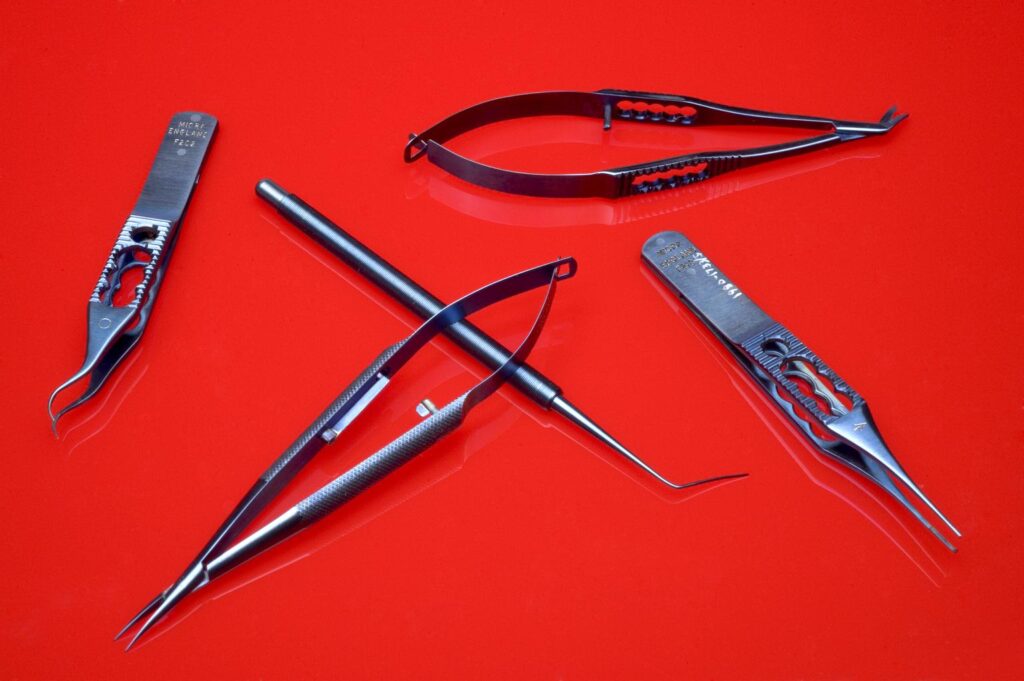Cataracts is a clouding of the lens of the eye linked to several conditions as well as older age. Treating cataracts is one of the oldest surgical procedures.
Developed around 8000 BCE in India, the clouded lens was pushed out of the way in a technique called couching. Techniques were then developed in the 1740s to remove the lens completely.
Yet, with no lens in their eye, people’s vision was blurred. Specialist spectacles with thick lenses aimed to give people some sight but could take a frustratingly long time to adjust to.
Intraocular lenses transformed the success of this common operation. The surgery places iny artificial lenses made of plastic inside the eye to be used after cataract surgery. 29 November 2024 marks the 75th anniversary of the first intra-ocular surgery.

Eye specialist Sir Harold Ridley (1906 – 2001) wanted to find a way to ensure people’s sight was restored post-surgery in order to, in his words, ‘complete the cataract surgery’. Collaborating with John Pike of Rayner, a lens and optical instrument maker and John Holt of Imperial Chemical Industries (ICI), Harold Ridley developed the intraocular lens.
This collaboration between a surgeon, an optical scientist and an industrial partner has led to millions of artificial lenses being made and implanted. Despite their now universal use, the road to acceptance was a long one.

Ridley began thinking about an intraocular lens in the 1930s. For those before him, it had been a theoretical or even amusing idea. It was a time when organ transplants were still a decade away and hip replacements, two decades away. Penicillin had only just become widely used and was still the only antibiotic available.
The task was made more difficult by the precision it required: the human eye lens is tiny – on average 10mm across and 4mm thick. Replicating it requires precision measurement for the size and shape but also in replicating its refractive properties – how it focuses light to enable vision.
Two events came to be instrumental in making the idea a reality. While working with injured pilots during the Second World War, Ridley and others found that slivers of Perspex from damaged aircraft that became embedded in the injured eyes of pilots were surprisingly not rejected by the body.
With this potential material for a lens identified, Ridley experimented with commercial grade PMMA – poly(methylmethacrylate) for his lens, a light-weight plastic. However, it was not pure enough for human use. Working with his collaborators Pike and Holt, they developed Perspex C.Q. (Clinical Quality) still in use for lenses today.

The second event was at the end of a cataract operation in 1947, when medical student Steve Parry asked why the lens could not be replaced. According to Ridley, this question gave him the impetus and courage to start working on the practical problems. Legend has it that Ridley and Pike came up with their ideas in the backseat of a car parked near to Ridley’s house to keep their work secret.
It took a year for Ridley to find the right candidate. He had to find someone who only had a cataract in one eye, and who could potentially live with sight loss in that eye should something go wrong. A 45-year-old woman named Elizabeth was the first patient to receive the implant surgery. One can only imagine the courage it took for her to undergo this new procedure. Carried out at St Thomas’ Hospital in London, much secrecy surrounded the operation either through fear of the potential risks or to prevent word leaking of this new innovation.
We know Elizabeth underwent surgery twice – the first time on 29 November 1949 and again on 8 February 1950. It is unclear whether the lens was implanted during that first surgery – but to Ridley the 1949 date was the first of a two part procedure to cure cataracts.
After the surgery, it was found the implanted lens was too thick causing blurred vision at a distance. By the time the third patient was operated on, Ridley and his partners had improved the lens.
Ridley did not publicly share his results for two years, keen to avoid surgeons rushing to carry out a new procedure and causing harm. There was also a limited number of people with cataracts in one eye who could potentially risk their sight.
At the Oxford Ophthalmological Conference on 9 October 1951, Ridley took along two people who had successfully undergone the lens implantation and a film of the operations. His talk received a mixed reactions and the film was never shown. Whether professional rivalry or horror to the idea of replacing body parts, even as small as a lens, saw the beginning of decades of hostility towards Harold Ridley and his supporters.
Ridley implanted around 1,000 lenses but over time up to 20% of these had to be removed due to complications, including the lens moving out of position, clouding of the lens or infection. Reports of worldwide problems due to poor quality lenses and poor surgical procedures only worsened the problem. The surgery was also complicated due to the tools of the time, with no operating microscopes available or microsurgical tools.
New surgical tools, clinical research and new designs led to a more successful surgical rate. By 1980 the intraocular lens had received FDA approval and with it, Ridley finally received appreciation for his work. This included a knighthood and recognition from the ophthalmology world. Many other ophthalmologists took up the design of intra-ocular lens, Peter Choyce, (1919-2001) Cornelius Binkhoret. (1912-1995), Jan Worst (1928-2015), and Svyatoslav Fyodorov (1927-2000).

Ridley and his wife Elizabeth set up the Ridley Eye Foundation in 1967 to spread access to eye treatments and eye surgery across the world. In 1989 and 1990, he himself underwent lens implementation in both eyes, at the same hospital that he had performed the original procedure.
Ridley passed away on 25 May 2001. Many of his obituaries credit him as the inventor of the intra-ocular lens (IOL), and yet few acknowledge the 30 years it took for it to become an accepted part of medical and surgical practice.
Ridley and his associates agreed not to patent and therefore profit from their invention. Millions of people worldwide have benefited from this now routine surgery.
You can hear Ridley and his contemporaries at the 50th anniversary dinner at the Science Museum describing their achievements.



